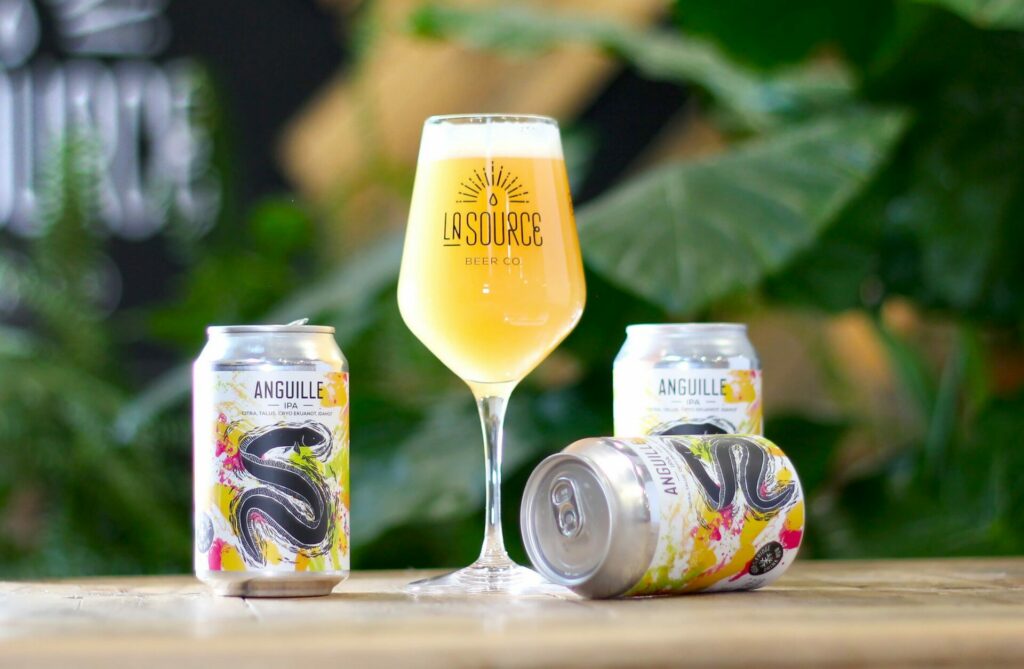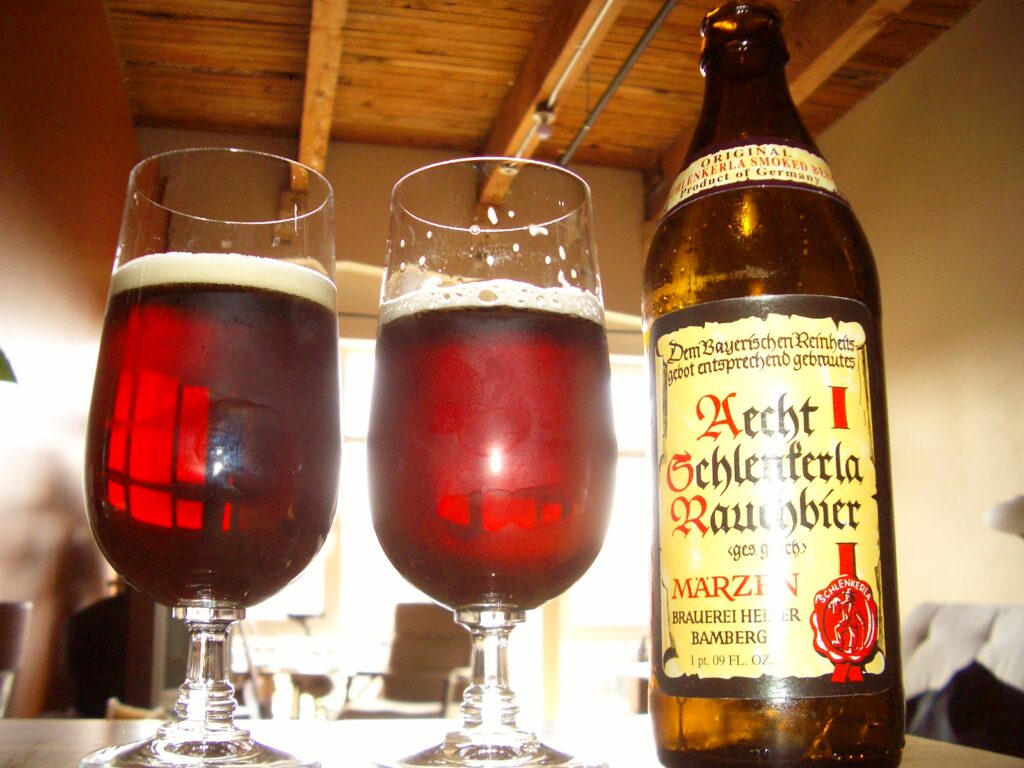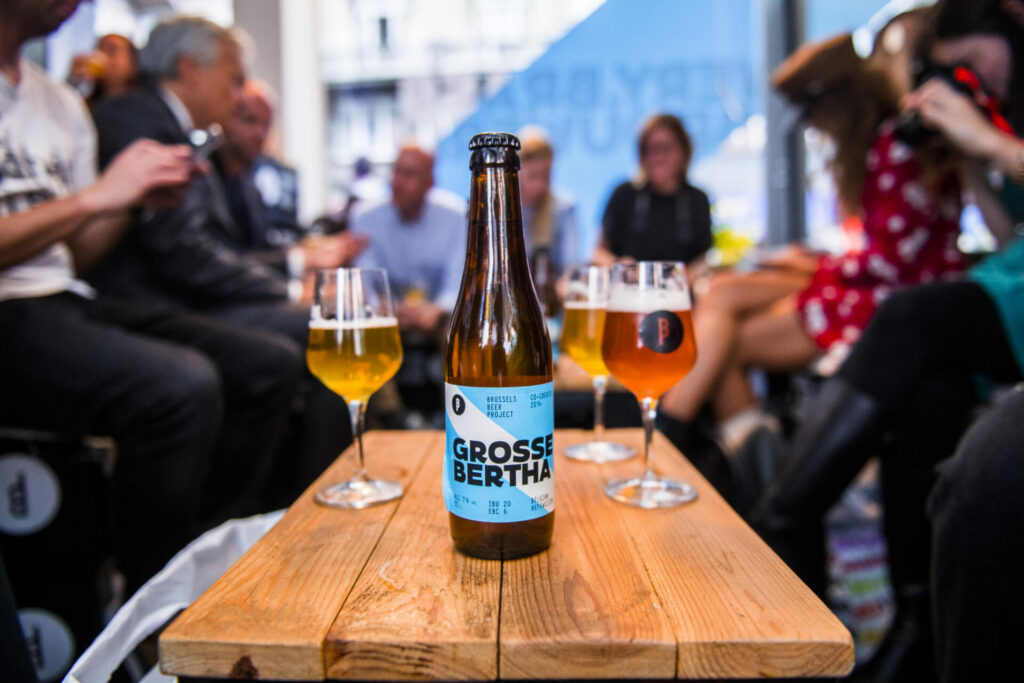In this season of barbecues, festivals and evenings spent with friends, one style of beer is being favoured above others. This is the beer that has been on the rise for a few years now and one which people who discover craft beers often start by tasting: the IPA.
Belgium has a few of its own IPAs, although it is not a staple of the country’s craft breweries which excel in traditionally classic beers, such as blondes or browns. But those which have been produced have taken off with excellent IPAs made by the Misery Beer Co. in Aywaille, the Brasserie de la Source, the Surréaliste brewery and the Brussels Beer Project in Brussels.

One of the many IPAs from Brasserie La Source. Credit: Brasserie La Source
A Belgian IPA consists of various Belgian malts, Belgian yeast strains and American hops. Compared to American IPAs, the Belgian IPA is reliant on the characteristics of the Belgian ingredients and contains fewer hops, nevertheless, it produces a delicious, hoppy and bright beer. The best way to describe a Belgian IPA beer is if an American IPA and Belgian Witbier fused together to make one outstanding creation.
The traditional form of a Belgian IPA is the Belgian White IPA, which has a flavour profile of fruits and spices including banana, citrus, cloves and pepper. The malt in the pale to deep golden brew can sometimes produce a slight bread-like flavour but overall is refreshing and tasty.
Additionally, Belgian Black IPAs and Double IPAs have also been developed. The Black IPAs use a toasty dark malt giving the beer flavours of light toffee and caramel. The Dubbel IPA, named by the monasteries of Belgium to determine different alcohol contents, has a higher alcohol content and is often amber or brown in colour.
Colonial history of the IPA
IPA stands for Indian Pale Ale. Its history begins in the middle of the 18th century when the English brewed pale ale — beer made with light, pale malt — which was destined for the colonies in India.
The travel time by boat being extremely long, they had the idea to over-hoard their beers. Hops, in addition to their aromatic or bittering properties, are a very useful antiseptic to prevent the proliferation of bacteria. This is how they were able to deliver quality beer to India by sea.
The style totally disappeared for over 100 years until it reappeared in the late 1970s and early 1980s in the United States, with the emergence of new hops. These are aromatic hops that pull more towards citrus fruits, tropical fruits and coconut, where European hops were more earthy and more resinous.
The first IPA-labelled beers were released in 1983 on the West Coast of the United States, in California. The first IPAs were named West Coast IPA or Old School IPA. They are much more bitter, maltier, drier and less modern than those we consume today. They are reminiscent of those that were brewed in the 18th century.
However, the style quickly evolved, with first DIPA (or Double IPA, stronger, above 7.5%), then TIPA (Triple IPA) or even QIPA (Quadruple IPA). They are maltier and much stronger in alcohol.
Related News
- 'It's a particular niche': Kefirs, kombuchas fascinate gourmet foodies
- Urine-based beer: Belgium’s brewing innovation?
On the other hand, the IPA Session, a much lighter beer (4.5%), much less malted, but still aromatic, has developed and has become very popular as it is much easier to drink.
Since the early 2000s, there has been a real dichotomy in the world of IPAs. If the West Coast brews were bitter and quite dry, the East Coast developed its own version, the NEIPA, New England IPA, named after the northeastern states of the United States.
NEIPA originated in Vermont. NEIPA is made with much fruitier hops, with hints of citrus and mango, and is much less bitter. The beer is made milky, a little translucent, by adding oatmeal at the time of brewing, which provides proteins that disturb the beer and make it denser.
The experimentation with IPAs to make them easier to drink – so-called Easy IPAs – has much controversy as experts believe they are a prime example of the industry going too far. One example is the IPA Milkshake, an IPA where lactose, a non-fermentable sugar, is added, which sweetens the beer and makes it even easier to drink.
Elsewhere, like in Germany, Smoked IPAs have emerged, which use smoked malt, like that used in the production of peated whiskey. The result is an aroma reminiscent of sausage.

A German smoked beer that reportedly tastes like cured meat. Credit: Wikimedia/Tom Harpel
Whatever your chosen flavour or style, it will become clear that a good IPA will be expensive, because it requires 10 to 20 times more hops than a normal beer. That is why there is currently strong pressure on the world hop market, which has seen its price explode. It takes 20 to 30 grams of hops per litre of IPA, at €40 per kilo.
Cheaper IPAs will more often than not say it contains 'hop extract,' rather than hops. The price will be lower but then so will the quality.

